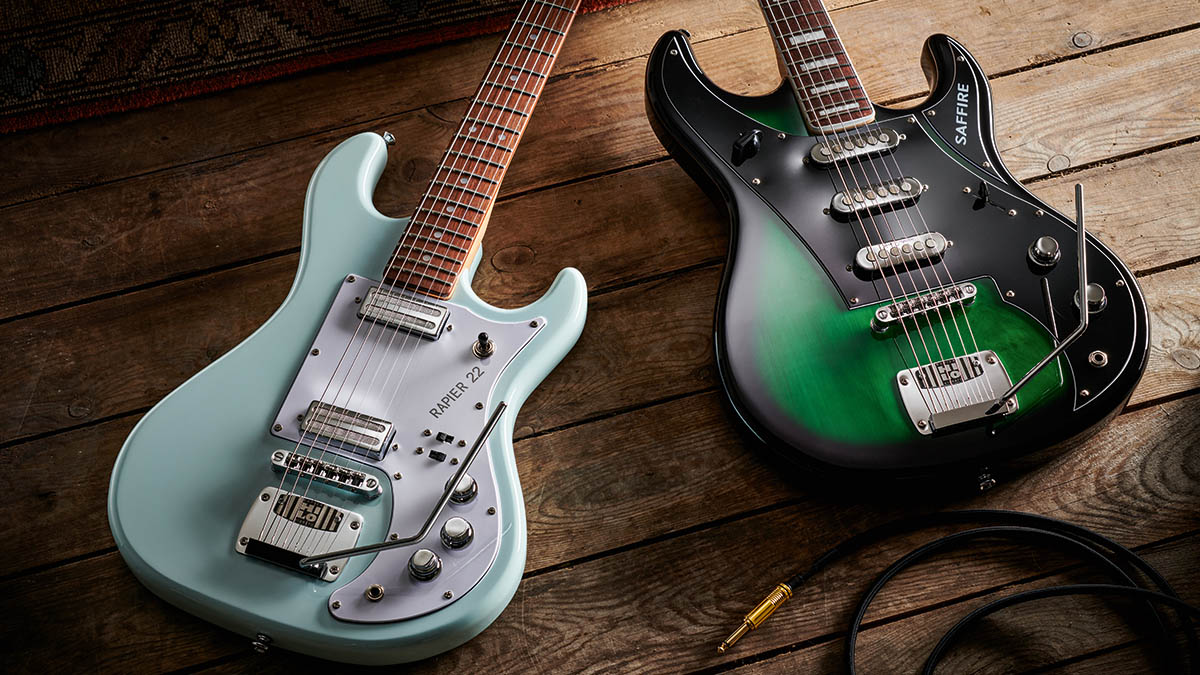
The new Chinese-made Rapier Guitar Company is the brainchild of veteran guitar designer Alan Entwistle, whom many will know from his own retro‑informed Revelation brand.
The first Rapier electric guitar was a rather tidy re-run of a Brit-classic, the Watkins Rapier. While Watkins is still a going concern, Alan had noticed that the rights to the name Rapier had lapsed, so he acquired them and it became the brand name.
When we spoke to Alan for that review, he promised more models inspired by the considerable number made by Watkins – who, as the ’60s progressed, changed the name on the headstocks to WEM and then Wilson.
So, for 2023, we get a welcome left-handed version of that original 33, a two-pickup 22, and the Saffire 6 and 12, originally called the Sapphire. “Yes, Sapphire is registered by someone else in the music category. It caused a bit of a problem until I dug into my Shakespeare and found a spelling of sapphire but with two ‘f’s, so we went with that.”
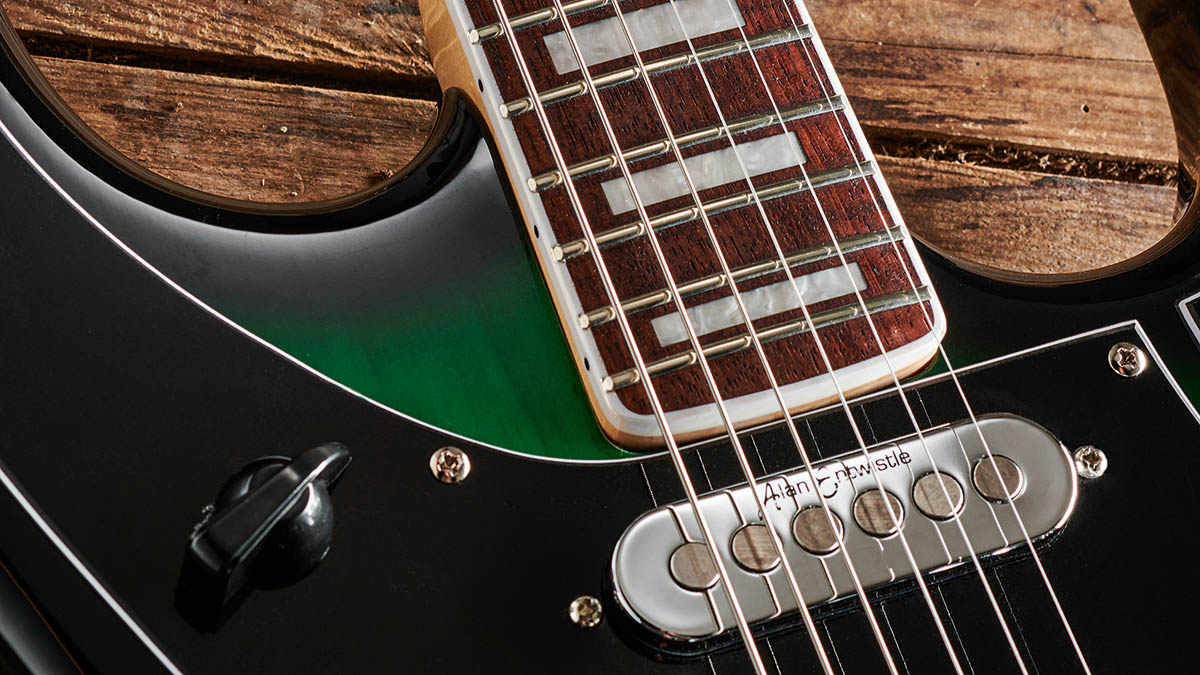
The prices might be low, but the build of our review 22 and Saffire 6 models is very tidy and offers some expanded sounds. The 22 is the more straightforward drive with its pair of EWR64 mini-humbuckers, a standard three-way toggle switch selector and a bass-cut switch for each pickup, but the new Saffire shoots for a standard three-single-coil setup with five-way lever selector and then adds a five-way rotary ATN-5 switch for some additional passive tone mangling.
Construction style is based on the Fender blueprint, as it always was – simple slab bodies with no comfort contouring – and because the vibrato is top-loading there’s none of the more complex routing of a Stratocaster to worry about.
The 22’s body is thinner than the Fender standard at 39mm, but the body edges are heavily radiused. Under the opaque finish is okoume, a lightweight mahogany-style wood that Alan prefers over more usual woods such as basswood. The neck is pretty standard, too, except here the Canadian maple is actually quarter-sawn with some light flame and flecked figuring to the back.
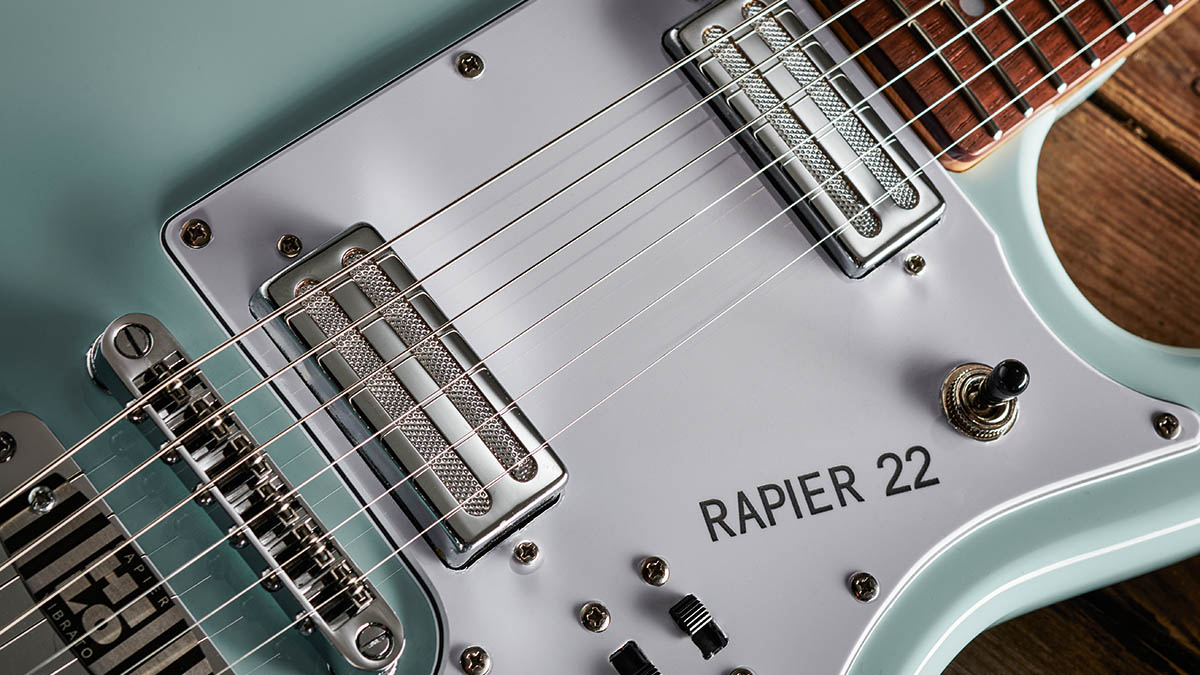
Although the 305mm (12-inch) radius fingerboard is quoted as being rosewood, its light brown colour and grain would suggest otherwise. Medium-gauge frets are very well installed – the fret slots are filled on the sides and the fingerboard’s top edges are nicely rolled – and the entire neck is clear-gloss finished.
As we said in our review of the original Rapier 33, that zero fret might be a retro step too far: the ‘nut’ is simply a string guide, and any wear over the zero fret in time will no doubt impair the tuning stability. That said, the re-engineered Hi Lo vibrato, with its roller-saddle tune-o-matic style bridge, is a simple and neat unit that’s not designed to dive-bomb, just for a little ’60s shimmer.
The Saffire comes across as a more upmarket piece with a slightly larger body that’s a little thicker, too, at 42mm, which impacts on the weight. Then we get the larger two-piece scratchplate with its nod to another ’60s classic, Burns. As you can see, the neck almost looks like it should be glued in. It’s way less ‘Fender’ with a crisply bound fingerboard, a little darker in colour than the 22’s, with large block inlays and that slightly oversized three-a-side headstock, which is spliced on under the first two frets.
Feel & Sounds
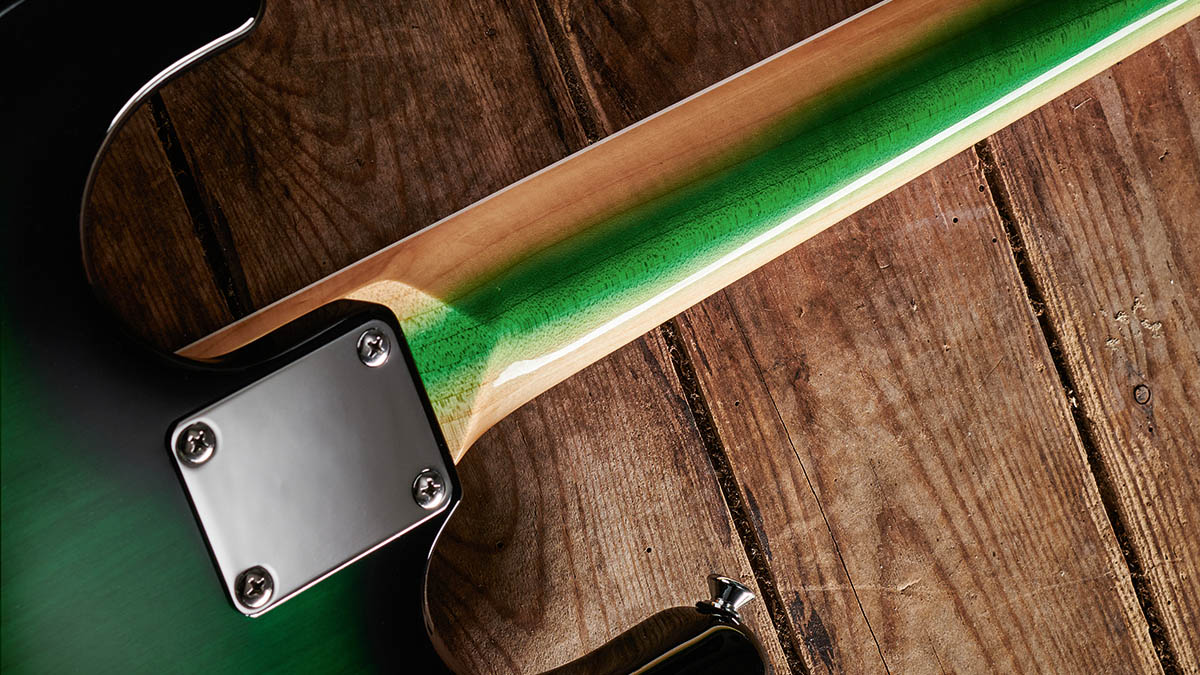
Both our samples are pretty light: the 22 weighs in at 3.15kg (6.93lb), the Saffire at 3.55k (7.81lb). The neck shaping is good, a mainstream and quite full-feeling ‘C’. The 22’s is actually marginally deeper with a measurement of 22mm at the 1st fret and 23.8mm at the 12th, as opposed to the Saffire’s 21.8mm/23.2mm. It’s close and our callipers tell us the 22’s neck is very slightly wider: 43.8mm at the nut and 53.4mm at the 12th, whereas the Saffire measures 43mm at the nut and 52.9mm at the 12th.
Minor differences aside, both feature good fretwork from a medium-gauge wire that’s actually slightly wider and taller on the 22. Setups are good, too, and even with some waggle from that simple vibrato (which has a rather Jazzmaster ‘soft’ feel), the tuning stability is perfectly good.
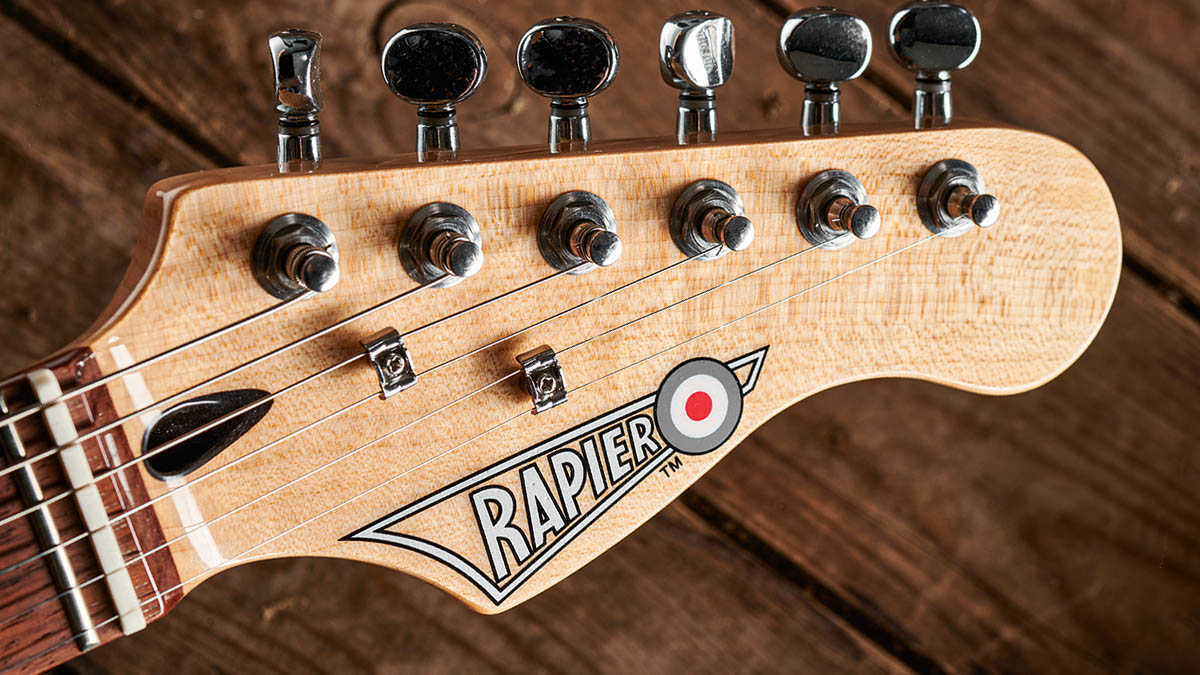
Listening acoustically to the pair there’s more Jazzmaster-like resonance to the Saffire and you’ll notice that there’s more ‘dead’ string behind the bridge than on the 22. With pretty similar bridge heights, it also means there’s a lower back angle to that portion of the strings on the Saffire.
Plugging in the 22, the neck pickup’s voice is quite rich and warm though not overthick, a perfectly good, jazzier start with plenty of more cranked blues-wail potential. The bridge is quite contrasting; it’s obviously brighter and thinner but also a little underpowered, a sort of smoother Tele style. In the middle position with slight volume reduction on the neck, this gives a wide and surprisingly big jangly voice.
There’s ’60s power-pop aplenty, too, but if you’re into nastier, snappier blues leads, then it’s right here and this writer would love to set one of these up for slide. Those bass-cut switches thin the sound quite a bit and drop the volume, something that works with both pickups on better than on the individual pickups, especially the bridge. But you can experiment with only cutting one pickup, and you have dual volumes to play with, too.
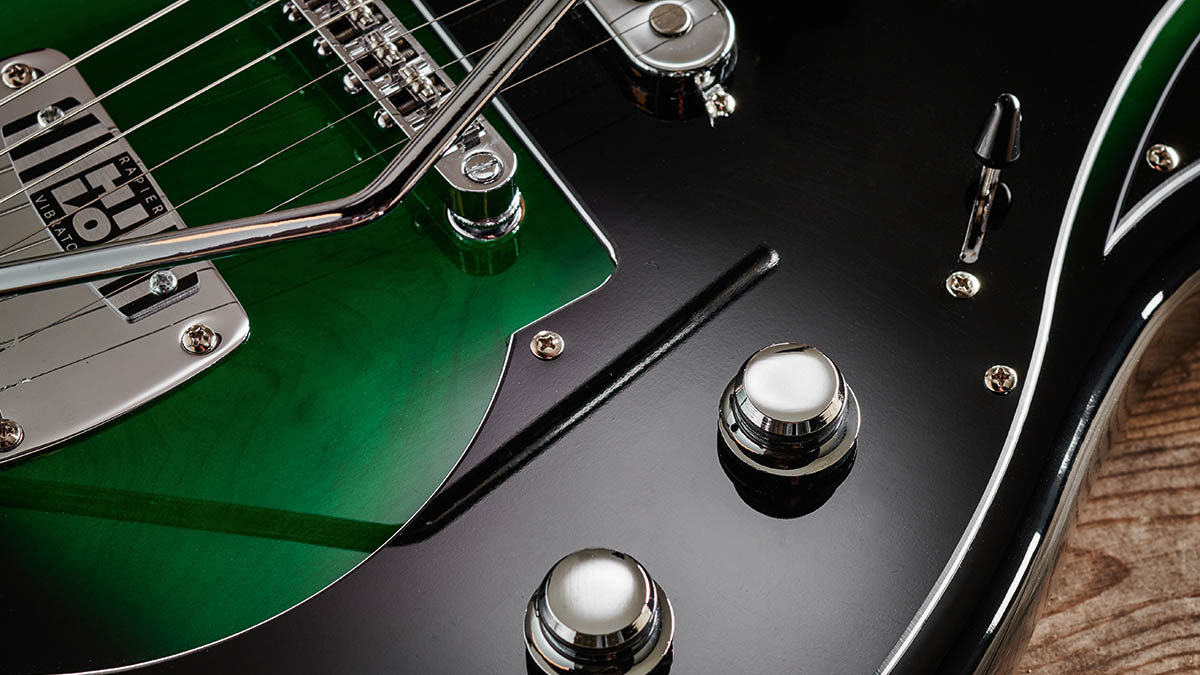
The Saffire’s pickups look like single coils that have been on the pies. Yet while they sound like big single coils, there’s a very slight out-of-phase character to the tone along with a little midrange nose, especially at the bridge.
The pickup mixes don’t have the classic sparkle, either – they’re slightly softer. So while there are some pretty characterful big cleans, these pickups also like some grit, from fuzzes to (dare we say) pretty gritty classic rock gain.
The ATN-5 passive filter gives you four more options that progressively thin the sound, but to our ears this is in a more usable way than the simple on/off bass-cut switches of the 22 – think of them as rhythm textures. We’d love to get recording with this Saffire and we suspect the ATN-5 really comes into its own on the 12-string: strumtastic!
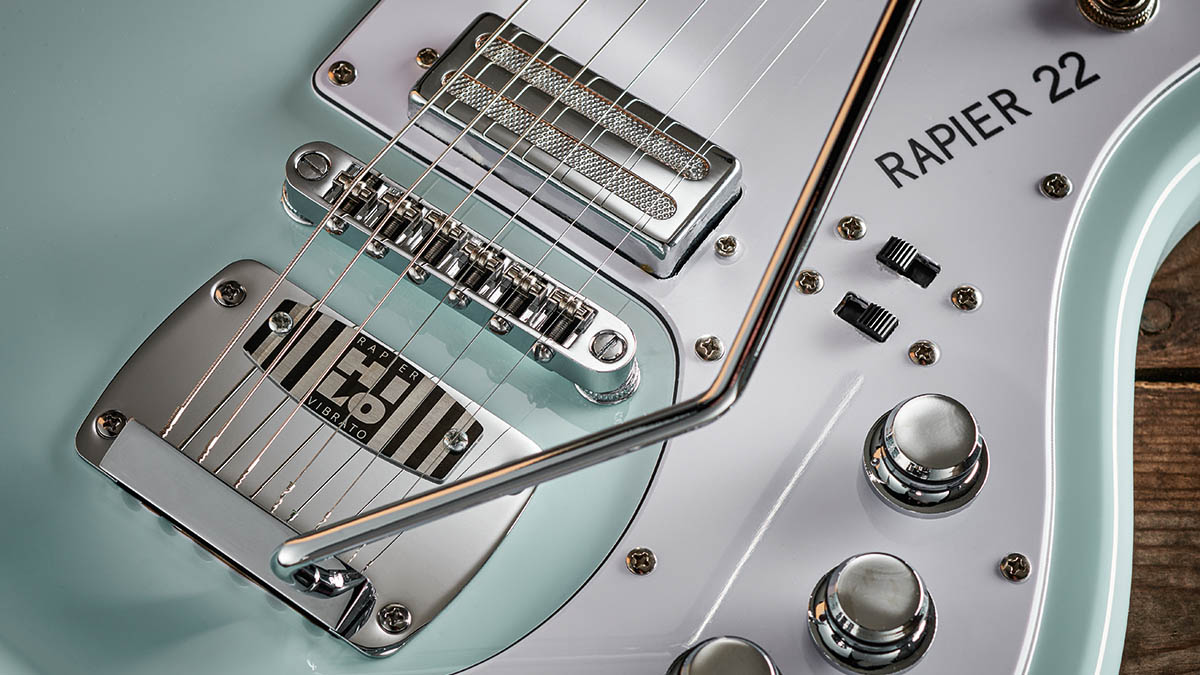
Verdict
Many of us don’t want different sounds, we’re more interested in nailing the classics. And yet the surprise here is the amount of diversity to be found in that humbucker-meets-single coil zone, which might be more than useful for the creative player, at least on the Saffire.
While we don’t like pigeonholing, it’s part of the job, and after some considerable test time we can’t help thinking that the 22 comes across as a rather good ‘dirty blues’ guitar, while the its stablemate the Saffire might be your best friend if you’re working in ’60s or more modern Britpop-based styles: a tonal bundle of Burns, Gretsch and Rickenbacker, or certainly hints in those directions.
But as with the Rapier 33 we looked at last year, it’s the simple, functional quality that impresses us here. There’s little wrong with the craft, and on the evidence of the setup alone, it’s clear someone cares about the end user.
Specs
Rapier 22
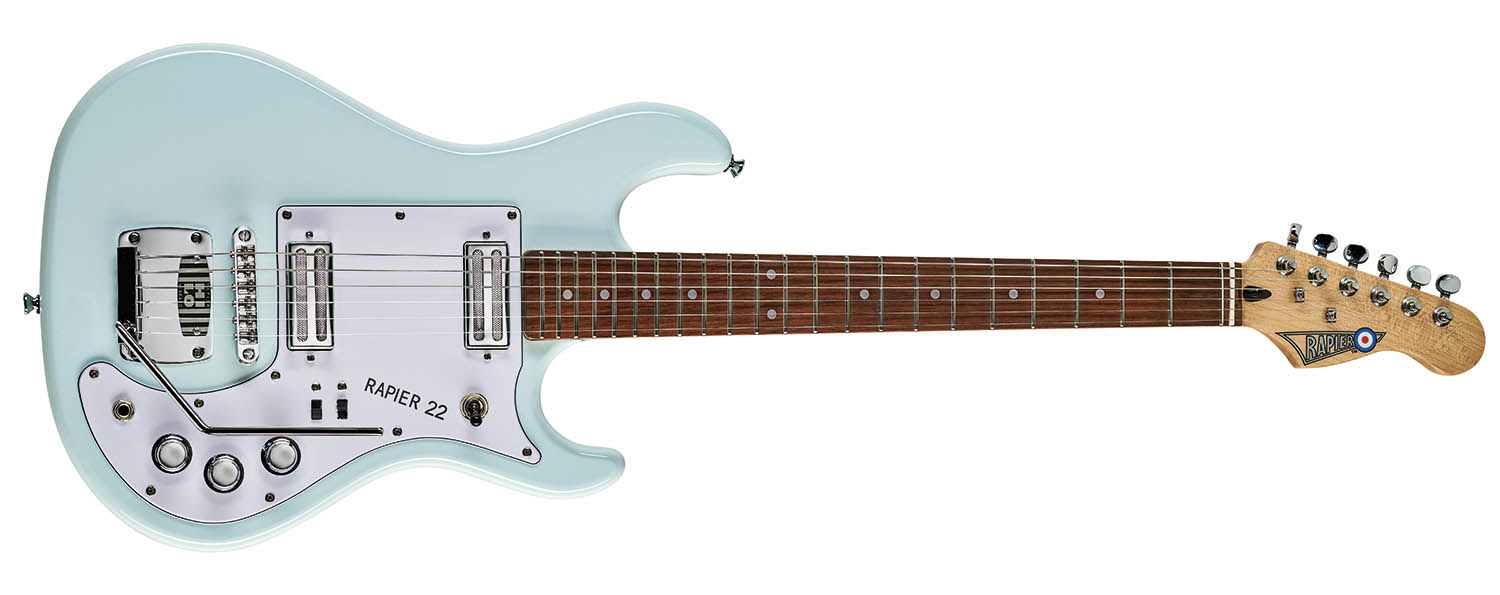
- PRICE: £439
- ORIGIN: China
- TYPE: Double-cutaway solidbody electric bolt-on
- BODY: Okoume
- NECK: Canadian maple, soft ‘C’ profile, bolt-on
- SCALE LENGTH: 648mm (25.5”)
- NUT/WIDTH: Synthetic/43.8mm
- FINGERBOARD: Rosewood, pearloid dot markers, 305mm (12”) radius
- FRETS: 22, medium, plus larger gauge zero fret
- HARDWARE: Original-style Rapier Hi Lo vibrato with roller saddle tune-o-matic-style bridge, Wilkinson die-cast tuners – chromed-plated
- STRING SPACING, BRIDGE: 51.5mm
- ELECTRICS: 2x Alan Entwistle EWR64 mini-humbuckers, 3-way toggle pickup selector, 2x slide switch (bass-cut for each pickup), individual pickup volume controls, master tone
- WEIGHT (kg/lb): 3.15/6.93
- OPTIONS: None
- RANGE OPTIONS: Along with the new Saffire there’s the 3-pickup Rapier 33 (£479)
- LEFT-HANDERS: Not this model, only Rapier 33 in Fiesta Red (£449)
- FINISHES: Daphne Blue (as reviewed), Fiesta Red, 3 Tone Sunburst, Artic White – all gloss including neck back and headstock
Rapier Saffire
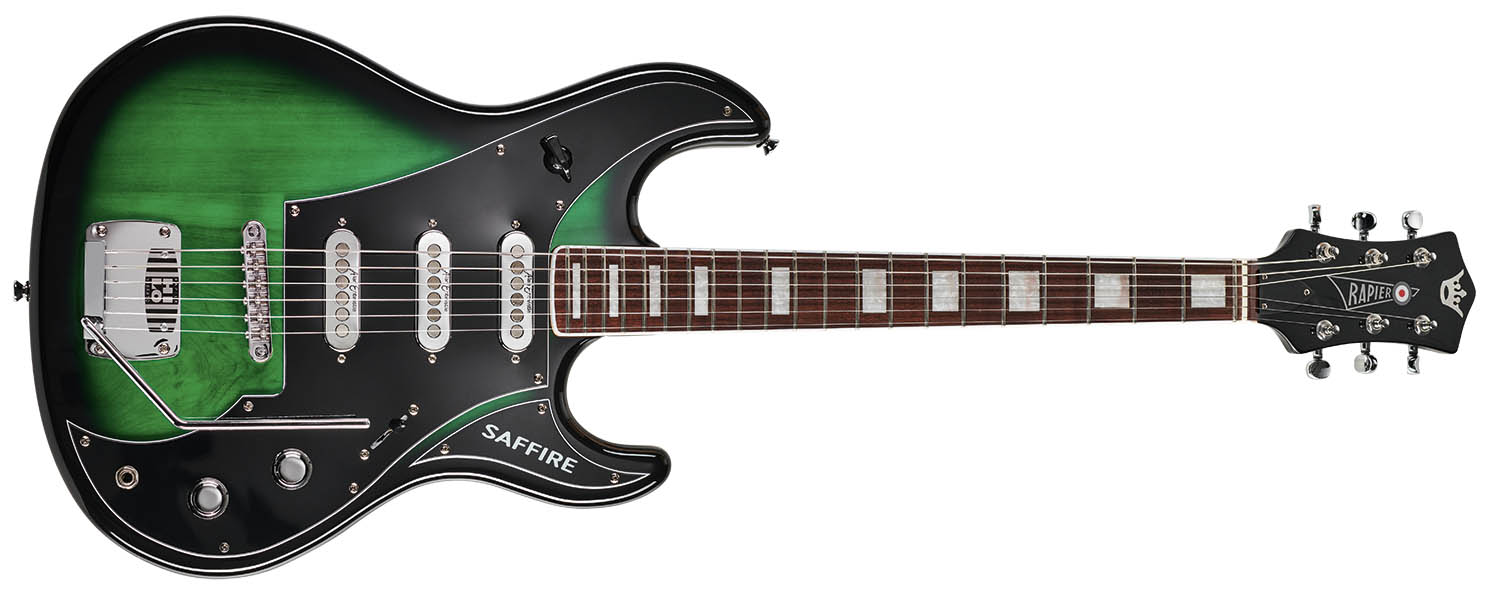
- PRICE: £479
- ORIGIN: China
- TYPE: Double-cutaway solidbody electric bolt-on
- BODY: Okoume
- NECK: Canadian maple, soft ‘C’ profile, bolt-on
- SCALE LENGTH: 648mm (25.5”)
- NUT/WIDTH: Synthetic/43mm
- FINGERBOARD: Bound rosewood, pearloid block markers, 305mm (12”) radius
- FRETS: 22, medium, plus larger gauge zero fret
- HARDWARE: Original-style Rapier Hi Lo vibrato with roller saddle tune-o-matic-style bridge, Wilkinson die-cast tuners – chromed-plated
- STRING SPACING, BRIDGE: 51.5mm
- ELECTRICS: 3x Alan Entwistle Astrosonic single coils, 5-way lever pickup selector, master volume and tone controls, plus ATN-5 5-position rotary frequency shift control
- WEIGHT (kg/lb): 3.55/7.81
- OPTIONS: None
- RANGE OPTIONS: The hardtail Rapier Saffire 12 (£549) comes in Sunburst, Vintage White and Greenburst
- LEFT-HANDERS: No, see Rapier 22
- FINISHES: Greenburst (as reviewed), 3-Tone Sunburst, Vintage White – all gloss including neck back and headstock
- CONTACT: John Hornby Skewes







